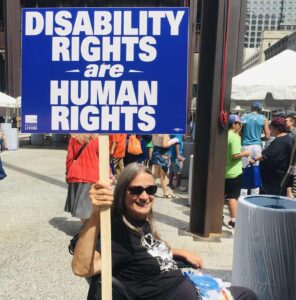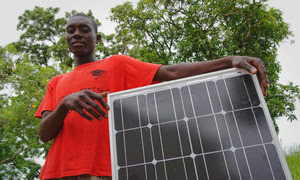In six years, 100 Resilient Cities has grown from an idea to a movement. Together, as a community of staff, CROs, and partners, we have shaped how the world understands the opportunities to build resilience. Since 2013, we have evolved from talking about definitions and job descriptions to sharing cutting-edge best practices. Now, as many of you are aware, we will change. 100RC will wind down starting August 1. I will step down as President and new efforts will emerge to help the network of cities continue to share best practices with one another and drive this movement forward.
Change isn’t always easy, but this network is well-positioned to thrive in the face of this evolution. Our work has evolved and matured over the years, though our north star has remained steady: to help cities create the enabling environment making it possible for them to transform how they plan and act to prepare for their most pressing challenges.
Earlier this month, we could see the impact of that work, our journey to date, and the urban resilience movement as the 2019 Urban Resilience Summit brought together the full 100 Resilient Cities Network for the fourth time in Rotterdam.
We are taking stock of this progress along four principal pathways:
• Building Champions: 83% of member cities have institutionalized the position of CRO, and more and more cities and organizations outside of the network are appointing CROs at the local, sub-national, and national levels based on our model.
• Taking Action: We have worked hand in hand with cities to prioritize, design, and implement ambitious initiatives with measurable outcomes. More than 80 Resilience Strategies will be published by the end of 2019, containing over 4,000 actions and initiatives targeted at improving urban resilience.
• Partnerships: More than 1,400 inter-city collaborations have come to life both regionally and globally. We’ve witnessed the power of the private sector in building a marketplace for resilience and innovating to create multi-benefit solutions, where none previously existed.
• Funding Resilience: Member cities have leveraged $25 billion for project implementation, and 55% of actions in their Resilience Strategies were fully or partially funded at the time of publication. In a reality where the only thing that can be predicted with certainty is constant change, investment in resilience is critical.
The work of this network is fundamentally changing the way cities plan and act in the 21st Century. Resilience initiatives are already standing out in the market, identified by their extensive and meaningful engagement with local residents, the political will and commitment behind them, and their pursuit of co-benefits far beyond the business-as-usual.
REPORT: Lessons from our work in cities around the world.
While the first phase of 100 Resilient Cities is coming to an end, we have laid the groundwork for a global movement to take hold. To succeed in the future, I would encourage practitioners to consider three areas of focus: implementation, institutionalization, and measurement.
Implementation is hard. The CROs along with their teams and partners have put so much thought into crafting actionable strategies and mapping a path to impact through tangible initiatives that deliver multiple benefits. But the real struggle will be ensuring these actions are implemented in the spirit they were conceived. Too often as cities procure and build solutions, old silos are reinforced, squeezing innovative resilience value out of those projects.
Institutionalization is key to the longevity of the urban resilience movement; only when these principles are embedded into the bylaws and budgets of cities can we consider resilience to be a mainstream concept. That CROs have secured city funding and budgets is a good sign, but we need the principles of resilience to permeate all aspects of the way cities are governed and run.
Measurement of resilience impact is difficult, because of timescale, geographic size, as well as the inherent issues with measuring low frequency, high impact events. And yet, this is one of the next big frontiers. If we are able, for example, to better quantify the multiple benefits delivered by innovative green infrastructure rather than a business-as-usual grey solution, we will be able to unlock resources, capital, and political support.
And finally: think big. We started this work with the intention to change the way cities plan and act, beginning with this vanguard of 100 but eventually reaching all the world’s cities. As this movement evolves, let’s keep our ambitions bold and ensure this work stays global, holistic, and always seeks to change the world.
The hard work of ensuring the longevity and endurance of this network and this movement starts now. Reflecting on this work, learning from it, and continually readjusting the approach until urban resilience becomes a living, breathing part of every city in our network and beyond – that challenge has just begun. As cities continue to turn to each other to share best practices, solve problems collectively, and extend peer-to-peer support, the resilience movement will continue.
This is our moment, and the movement is well and truly underway.
Thank you, Michael Berkowitz
President, 100 Resilient Cities – Pioneered by The Rockefeller Foundation




